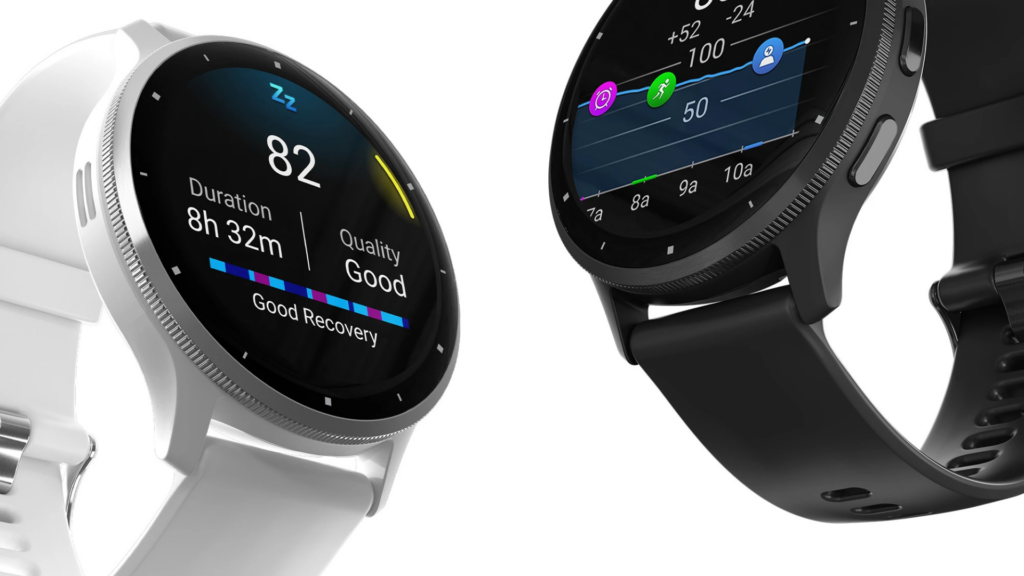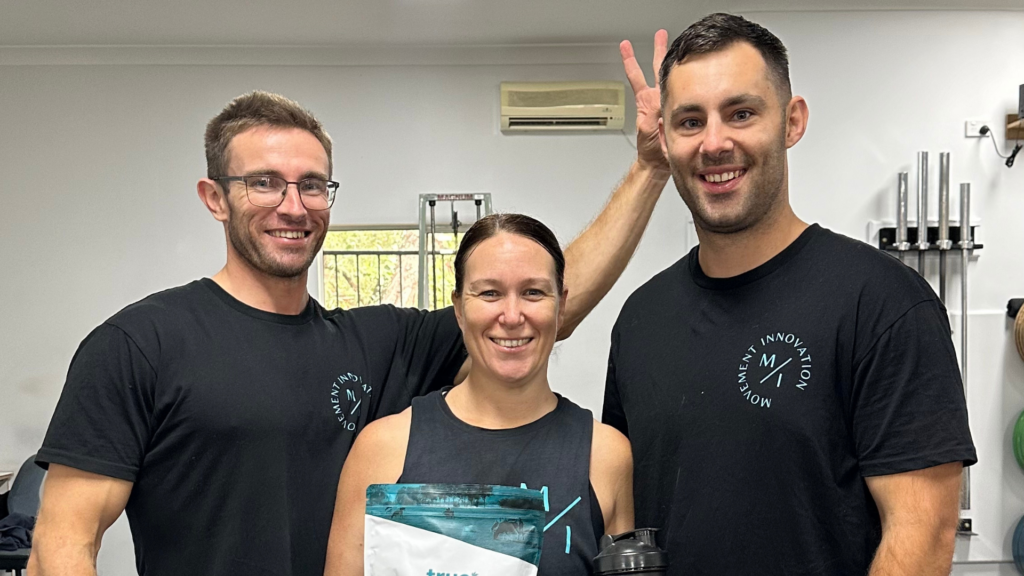Not all recovery is foam rolling and rest days. The right wearable can tell you more than you'd guess.
Most people put all their focus into training. They track their workouts, keep an eye on their steps, and try to eat a bit better. That’s all important, but there’s another part of the puzzle that often gets missed—recovery.
Recovery is where progress actually happens. It’s when your body adapts, rebuilds, and resets. Without it, you just end up spinning your wheels. You feel flat in your sessions, little injuries start creeping in, and you wonder why you’re not getting stronger or feeling better, even though you’re showing up and putting in the work.
This is where wearable gadgets can be useful. They help you see how your body is responding to training, stress, sleep, and everything else life throws at you. They’re not just gadgets. They’re useful tools that give you feedback so you can make better calls with your training and recovery.
Here are five wearables that actually help with recovery. Each one does it a little differently, but they all give useful feedback that can help you feel better, train more consistently, and avoid burnout.
1. Whoop 4.0

Whoop is built for people who want to understand what’s going on under the surface. It’s not a watch. There’s no screen or flashy numbers. It just collects data quietly in the background and sends it to the app, where it gives you daily insights.
What it tracks really well is strain and recovery. Strain is a measure of how much physical and mental stress your body is under. Recovery is based on your heart rate variability, resting heart rate, sleep, and a few other markers. When those scores are off, it’s a sign your body needs more rest.
What makes Whoop helpful is that it doesn’t just throw numbers at you. It gives clear suggestions based on your data. If your recovery score is low, it might tell you to dial things back. If your score is high, it might suggest you’re good to push harder.
It also tracks sleep in a lot of detail, including how long you spend in each sleep stage, how many times you woke up, and how long it took to fall asleep.
Why it works:
- Helps you avoid overtraining by showing when your recovery is low
- Encourages better sleep and routine by tracking it nightly
- Tracks physical and mental stress, not just exercise
You wear it all day, all night, and you stop guessing whether you should rest or train.
2. Oura Ring Gen 3

Oura is a recovery tracker that looks like a normal ring. No screen, no beeping, nothing flashy. It just tracks key markers while you go about your day.
It’s especially good for tracking sleep and recovery. Each morning, it gives you a readiness score based on your heart rate variability, sleep quality, body temperature, and activity the day before. If that score is low, it means your body is still recovering. If it’s high, you’re likely good to go.
Oura also picks up on patterns in your body temperature, which can show signs of illness or stress before you even feel it. That’s helpful when you’re trying to avoid getting run down or pushing through when you shouldn’t.
One of the biggest benefits is how easy it is to wear. It’s light, doesn’t get in the way, and doesn’t feel like a fitness tracker. For people who don’t like wearing watches or bands, it’s a solid option.
Why it works:
- Tracks sleep quality and how well your body is recovering
- Gives daily readiness scores based on actual recovery, not guesswork
- Easy to wear, even overnight, without noticing it’s there
It’s especially good for those who want to improve sleep and recovery without being glued to a screen.
3. Garmin Venu 3

Garmin has always made great fitness watches, but the Venu 3 takes things a step further when it comes to recovery. It tracks the usual things like steps and heart rate, but also includes features that show how your body is handling stress and rest.
One of its standout features is Body Battery. This gives you a number from zero to one hundred that shows how much energy your body has at that moment. It goes up when you rest and sleep, and it drops as you train, work, and deal with stress. It’s a simple way to see if you’re ready to train or if your body needs more time to recharge.
It also tracks sleep in depth, including naps, and provides a sleep score to help you build better habits. The watch includes breathing exercises and guided meditation, which can actually help with recovery on days where stress is high and energy is low.
Why it works:
- Body Battery shows how much energy you have to train
- Tracks sleep and recovery without needing to think about it
- Helps you manage stress and energy levels throughout the day
If you like having one device that tracks everything, Garmin does a great job without feeling too complicated.
4. Apple Watch Series 9 with Recovery Apps

On its own, the Apple Watch isn’t a full recovery tracker, but once you add the right apps, it becomes a useful tool. Apps like HRV4Training, Gentler Streak, and AutoSleep help turn your watch into a recovery coach.
Gentler Streak is especially helpful. It looks at your recent activity, recovery levels, and sleep, then suggests how hard you should train that day. You’ll get nudges to rest when your recovery is low and pushes when you’re ready for more.
AutoSleep gives detailed sleep tracking that fills in some of the gaps the Apple Watch doesn’t cover on its own. HRV4Training tracks your heart rate variability each morning and builds a recovery score over time.
What makes the Apple Watch a good option is how well it fits into daily life. You can track your recovery, read a message, check your schedule, and listen to music all on one device. It’s not as recovery-specific as something like Whoop or Oura, but it’s a strong all-rounder.
Why it works:
- Easily pairs with recovery apps to give clear feedback
- Tracks HRV, sleep, and readiness when used correctly
- Works well if you’re already using an iPhone and want everything connected
If you already wear one, it doesn’t take much to turn it into a recovery tracker that actually helps.
5. Polar Ignite 3

Polar has been making training watches for years, and the Ignite 3 is a simple, easy-to-use option for anyone wanting recovery insights without getting overwhelmed.
Its Nightly Recharge feature shows how well your body recovered during sleep. It looks at your autonomic nervous system activity, which reflects how much stress your body is under, and gives you a simple score each morning.
It also offers daily training suggestions through something called FitSpark. These suggestions change based on how recovered you are. If you had a poor night’s sleep or high stress, it might suggest a mobility or light cardio session. If recovery is strong, it might push a bit more.
There are also breathing and relaxation tools built in, which can help you wind down at night or reset after a stressful day.
Why it works:
- Shows how recovered your body is each morning
- Offers clear, easy-to-follow training suggestions
- Simple to use, without needing to dig through a bunch of settings
It’s a good entry point for someone who wants recovery support without spending big or dealing with a complex setup.
My take on it
If you’re training consistently and want to recover better, feel fresher, and avoid hitting a wall, it’s worth paying attention to what your body’s doing between sessions. Recovery tracking helps take the guesswork out of it. You start to notice patterns, make better decisions, and know when it’s time to push or slow down.
Each of these wearables has its place depending on what you’re after:
Whoop 4.0 is good if you’re not fussed about screens or steps and just want detailed recovery feedback.
Oura Ring works well if you prefer something small and want to focus on sleep and recovery.
Garmin Venu 3 gives you a solid view of your energy levels and how your body’s handling stress.
Apple Watch can do the job if you use the right apps and already wear one day to day.
Polar Ignite 3 is a straightforward option with simple recovery tracking and daily training suggestions.
Whichever one you go with, the point is the same, know how your body’s tracking, rest when you need to, and get more out of your training by listening to the signs. If you ever want help setting one up or figuring out how to use the data, just ask when you’re in or send our gym a message or email. Happy to chat through it.
Written by Luke Nivison-Smith, founder of Movement Innovation. I’ve been a personal trainer for over 13 years, helping people move better and feel better. If you’re keen to check things out, grab a 7-day free trial and come train with us.

